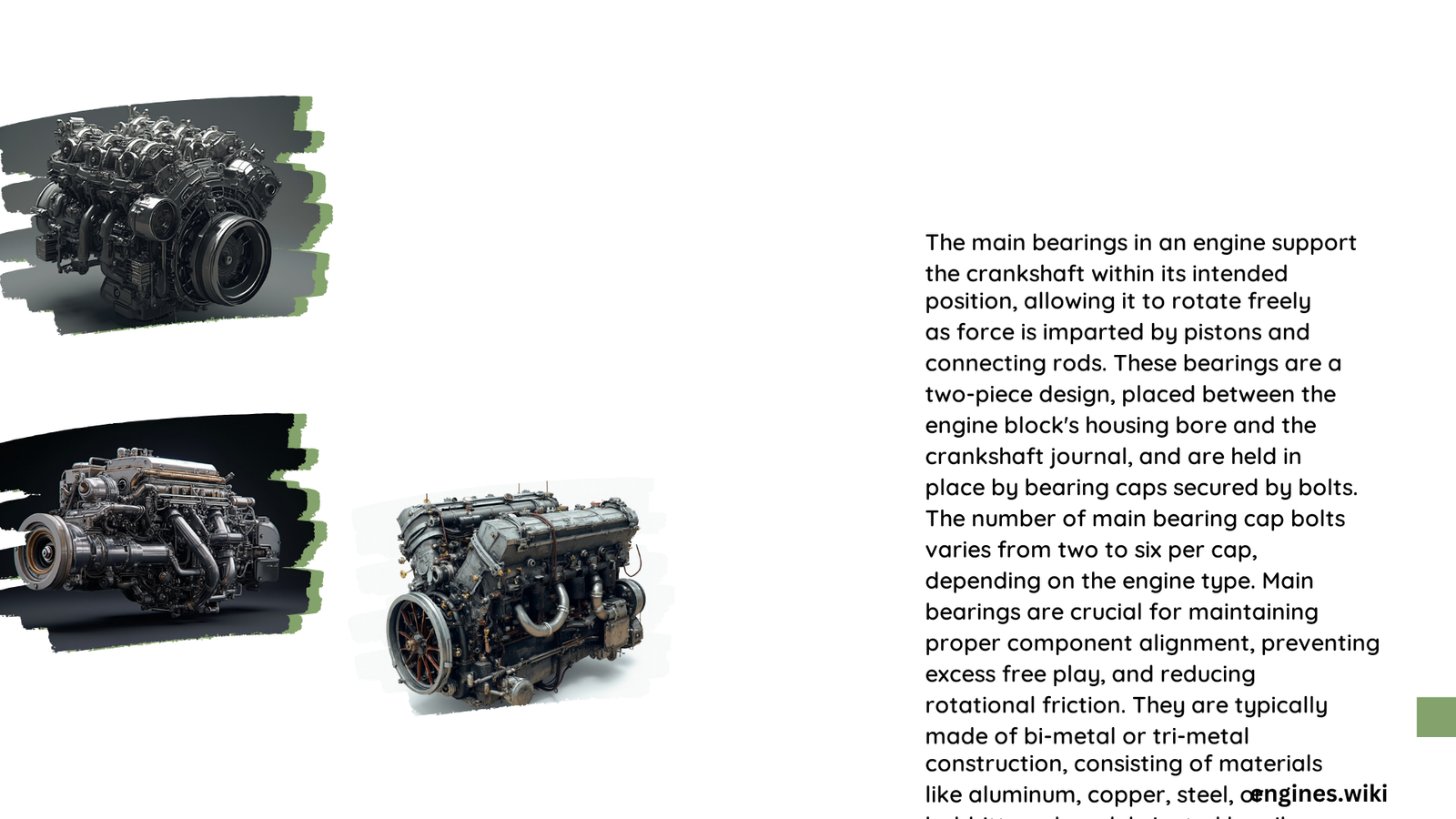Main bearings are critical mechanical components that provide essential support and enable smooth rotation of the crankshaft within an engine block. These precision-engineered components manage complex mechanical loads, thermal conditions, and friction dynamics, ensuring optimal engine performance and longevity through sophisticated material design and strategic structural configurations.
What Are the Primary Types of Main Bearings?
Lead Bronze Bearings: Structural Composition
Lead bronze bearings represent a sophisticated engineering solution with multiple layers:
- Flash Layer: Tin and lead, approximately 0.035mm thick
- Nickel Barrier Layer: 0.02mm thick intermediate protection
- Lead Bronze Layer: Primary bearing material
- Steel Back: Structural support foundation
Bi-Metal Bearings: Performance Characteristics
Bi-metal bearings offer unique advantages:
| Layer | Composition | Thickness | Function |
|---|---|---|---|
| Overlay | Aluminum-Tin | 0.5-1.3mm | Primary load-bearing surface |
| Bonding | Aluminum | 0.1mm | Structural adhesion |
| Back | Steel | Variable | Mechanical support |
Tri-Metal Bearings: Advanced Engineering
Tri-metal bearings provide superior performance through complex layering:
- Ultrathin flash layer (1 micron)
- White metal overlay (20 microns)
- Anti-corrosion interlay (5 microns)
- Lead-bronze lining (1mm)
- Robust steel backing
How Do Material Properties Impact Bearing Performance?

Load Carrying Capacity
The multilayered design of tri-metal bearings enables:
– Enhanced load distribution
– Improved stress absorption
– Reduced mechanical fatigue
Wear Resistance Mechanisms
Key factors influencing wear resistance include:
– Soft overlay materials
– Particle embedding capabilities
– Thermal conductivity
– Surface conformability
What Installation Techniques Ensure Optimal Bearing Function?
Precision Alignment Strategies
Critical installation considerations:
– Split bearing shell design
– Specific torque specifications
– Precise clearance measurements
– Contamination prevention
Clearance Specification Protocols
Recommended practices:
– Utilize plastigage for measurement
– Target clearance: 0.001-0.003 inches
– Verify manufacturer-specific tolerances
What Challenges Do Engineers Face with Main Bearings?
Common Performance Limitations
Potential issues include:
– Inadequate lubrication
– Thermal stress
– Particulate contamination
– Misalignment tolerances
Mitigation Strategies
Recommended solutions:
– Regular maintenance
– Precise installation
– High-quality lubricants
– Periodic clearance inspections
Why Material Selection Matters
Metallurgical Considerations
Key material properties:
– Thermal conductivity
– Wear resistance
– Load-bearing capacity
– Corrosion protection
Performance Optimization Techniques
Engineering approaches:
– Multi-layer construction
– Advanced alloy development
– Precision manufacturing
Conclusion
Main bearings represent a critical intersection of materials science, mechanical engineering, and precision manufacturing. Their complex design and strategic material selection directly influence engine performance, efficiency, and longevity.
